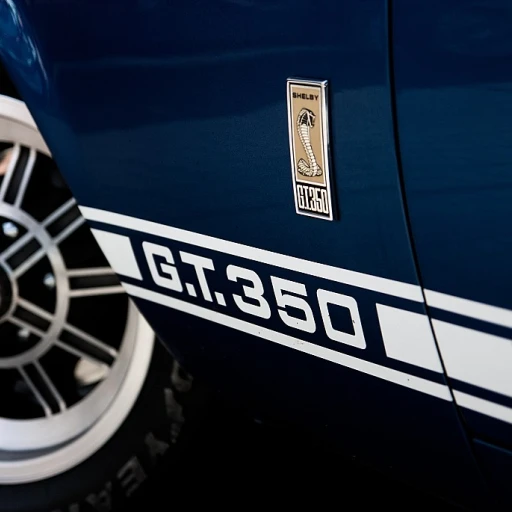The role of spring rate in luxury car performance
The Influence of Spring Rate on High-End Car Dynamics
When discussing luxury car performance, the spring rate is a crucial factor that often takes center stage. This component plays a pivotal role in determining how a car handles, especially in high-performance models like the Porsche 991 GT3 RS. The spring rate, essentially the stiffness of the springs, directly affects the ride comfort, control, and overall driving experience.
In luxury cars, the balance between comfort and performance is vital. The spring rate affects how the suspension absorbs bumps and road imperfections, impacting both ride quality and handling precision. For instance, a higher spring rate can enhance performance on the track by reducing body roll and improving the car's responsiveness. However, it might compromise ride comfort on regular roads.
Luxury sports cars, such as the 991 GT3 RS, are engineered with a focus on maximizing performance friction and control. The front and rear axle spring rates are meticulously calibrated to ensure optimal balance. The front suspension, joined with advanced control arm designs and anti-roll bars, works in harmony with the rear axle to deliver a seamless driving experience.
Understanding the nuances of spring rates in luxury cars is essential for enthusiasts and owners alike. It provides insight into how adjustments can be made to tailor the car's performance to individual preferences, whether for track days or comfortable cruising. For more on how adaptive suspension technology redefines luxury car handling, you can explore this article.
Technical aspects of the 991 GT3 RS spring rate
Delving into the Mechanics of the 991 GT3 RS Springs
The Porsche 991 GT3 RS is a marvel of engineering, especially when it comes to its suspension system. The spring rate plays a pivotal role in how this luxury car handles the road. Understanding the technical aspects of the 991 GT3 RS spring rate can give you a deeper appreciation of its performance capabilities. The front and rear springs are meticulously designed to balance ride comfort with the agility needed on a track.
At the heart of this system is the main spring, which is joined by a helper spring to provide a dynamic response. The front axle is equipped with a sophisticated front suspension that ensures the car remains stable, even at high speeds. The rear axle, on the other hand, works in harmony with the front to deliver a seamless driving experience.
Performance friction is minimized through the use of advanced control arms and anti-roll bars, which help maintain the car's balance. The spring rate is carefully calibrated to ensure that the wheel rate is optimal, allowing the car to respond quickly to driver inputs.
For those interested in the technical details, the thread starter on various car forums often dives into discussions about the spring rate's impact on the 991 GT3 RS's handling. Originally posted insights reveal that the full soft setting can provide more comfort, while a stiffer rate enhances track performance.
For a more comprehensive understanding of the speed and sophistication that luxury sports cars like the 991 GT3 RS offer, check out this deep dive into speed and sophistication.
Comparing spring rates in luxury sports cars
Exploring the Differences in Spring Rates Among High-End Sports Cars
The luxury sports car market is a playground for automobiles like the Porsche 991 GT3 RS, known for its outstanding suspension and spring handling. Understanding the nuances of spring rates across different brands can shed light on how each manufacturer prioritizes performance, ride comfort, and handling. The spring rate is a crucial factor that varies with every model. For example, the front and rear axles vibration is controlled by main springs and a sophisticated suspension system, designed to maintain both control and comfort over rough surfaces.- Porsche's Approach: With models like the 991 GT3 RS and its club cousin, the cup car, Porsche implements specific spring rates that prioritize both agility and grip. This involves utilizing helper springs to maintain ride height and full suspension travel, ensuring that performance friction does not detract from a seamless driving experience.
- Comparing Ferrari: Known for their aggressive track orientations, Ferrari might employ stiffer springs up front to handle the extraordinary power output. This enhancement in rate ensures better wheel control but might reduce some comfort—showing a trade-off different from the more comfort-focused approach.
- Lamborghini's System: Using anti-roll bars and spring systems joined by control arms, their luxury models articulate variations in wheel rates to ensure power and ride comfort are not compromised. This delicate balance is achieved by joining both front suspension technology and rear axle adjustments.
Adjusting spring rates for optimal performance
Enhancing Performance through Precise Spring Rate Adjustments
Adjusting the spring rate can be a pivotal step in achieving the desired balance of performance in luxury sports cars like the Porsche 991 GT3 RS. Understanding the nuances of these changes can help in optimizing both track capabilities and ride comfort. To fine-tune the car's dynamics, one must consider the distribution of spring rates between the front and rear axles. By modifying these, you can control key performance metrics like wheel rate and ride quality, which are crucial for vehicles that spend significant time on the track. The interaction between the front suspension and the rear axle plays a vital role in maintaining a harmonious ride, especially when paired with other components like the control arm or anti-roll bar. In the context of a Porsche GT3 RS, detailed attention on adjusting the main spring rates and helper springs can lead to more refined handling characteristics. When a driver opts to make these modifications, they are aiming to either stiffen or soften the ride to improve stability or increase comfort. For instance, opting for a full soft setting might better accommodate a bumpy road, while a stiffer setup can enhance cornering power on a smooth track. For those joined in discussions on specialized car forums, shared experiences highlight the difference made by small incremental adjustments to spring rates. Originally posted insights and thread starters often note that even minute changes can significantly affect vehicle dynamics. It's crucial to remember that while adjusting the spring rate, maintaining balance with other components like the performance friction settings and the anti-roll setup is essential to avoid compromising control. When discussing spring rate adjustments, it's also important to be aware of the constraints posed by the suspension design, including the intricacies of a cup car's setup or limitations in a standard model. Given these factors, tailoring spring rates effectively requires both an understanding of the car's mechanical setup and real-world testing to achieve the desired performance outcomes.Real-world implications of spring rate adjustments
Real-World Benefits of Customizing Spring Rates
Adjusting the spring rate on your Porsche, especially a high-performance model like the 991 GT3 RS, can significantly transform your driving experience. Real-world implications of these adjustments are most evident on both the track and daily asphalt journeys. For track enthusiasts, modifying the spring rate can enhance the car's agility and cornering capabilities. By opting for a stiffer main spring on the front axle, one might notice improved responsiveness during high-speed turns, providing better feedback through the steering wheel. This adjustment can also help maintain balance between the front and rear, ensuring the car remains stable even at the limits of grip. On the road, however, a more conservative approach might be preferred to strike a balance between performance and ride comfort. Some drivers may choose to soften the rear springs, or incorporate a helper spring setup, to smooth out the bumps and imperfections commonly found on daily commutes. This can provide luxury car owners with an optimal ride experience without compromising the performance friction that makes sports cars such a thrill to drive. The choice to tweak spring rates also directly influences the car’s suspension system. By adjusting the front suspension and rear suspension rates, drivers can tailor their car’s behavior to suit specific driving conditions—be it a spirited drive down a winding road or a relaxed cruise through the city. Moreover, with control arms and anti-roll bars, further refinements can be made for those looking to fine-tune the performance characteristics to personal preferences. Overall, real-world benefits derived from spring rate customization should not be underestimated. Every detail, from the helper spring to the anti-roll mechanisms, is an opportunity to elevate your driving experience and maintain your Porsche's competitive edge, whether on track day or during everyday rides.Future trends in spring rate technology for luxury cars
Innovations in Spring Rate Technology
The landscape of luxury car performance is constantly evolving, and spring rate technology is no exception. As manufacturers push the boundaries of what's possible, we're seeing exciting developments that promise to enhance both the ride comfort and performance of high-end vehicles like the 991 GT3 RS.
One of the most significant trends is the integration of adaptive suspension systems. These systems allow for real-time adjustments to spring rates, offering a dynamic response to changing road conditions and driving styles. This not only optimizes the car's performance on the track but also ensures a smooth ride on everyday roads. The technology involves sensors and control units that adjust the suspension settings, including the main spring and helper spring, to maintain optimal wheel rate and ride comfort.
Another area of innovation is the use of lightweight materials in spring construction. By reducing the weight of the springs, manufacturers can improve the power-to-weight ratio of the car, enhancing its agility and acceleration. This is particularly important for the front and rear axles, where weight distribution plays a crucial role in handling dynamics. Advanced materials like carbon fiber and high-strength alloys are being explored to achieve this balance.
Furthermore, the development of electronically controlled anti-roll bars is gaining traction. These systems work in conjunction with the car's suspension to reduce body roll during cornering, allowing for more precise control and stability. This technology is especially beneficial for luxury sports cars that demand both high performance and comfort.
As we look to the future, the integration of artificial intelligence and machine learning into suspension systems could revolutionize how spring rates are adjusted. By analyzing data from various sensors, AI could predict and adapt to driving conditions with even greater precision, offering a bespoke driving experience tailored to the driver's preferences.
In conclusion, the future of spring rate technology in luxury cars is bright, with continuous advancements promising to enhance both performance and comfort. As these technologies mature, they will undoubtedly become standard features in the next generation of luxury sports cars, setting new benchmarks in automotive engineering.













